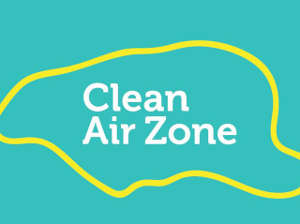UK Clean Air Zone Guide

As motorists in Oxford have been the latest to discover, many more of the UK’s overburdened city drivers are scheduled to be hounded by two more acronyms: ULEZ and CAZ. So what do they mean and stand for: ULEZ signifies an Ultra-Low Emission Zone, with London becoming the first UK city to introduce this kind of pollution-reducing scheme back in April, 2019.
AZ denotes an urban Clean Air Zone, and though the CAZ roll-out has already begun, many more cities are starting to implement CAZ schemes throughout 2022 and beyond.
CAZ or ULEZ, what’s the difference?
As many in the Motor Trade industry and other businesses are very much aware, the government have adopted a clear policy to discourage the use of air-polluting vehicles. The underlying principle being that those vehicles deemed most likely to pollute the environment will be penalised every time they venture into our cities.
One implication of this is that motor dealers selling new and used vehicles are now more likely than ever to be closely quizzed about the relationship between a car’s emission rating and the potential scale of pollution charges it may attract, not always the easiest advice to offer.
A CAZ designation refers to a certain geographical area within a town or city where the use of vehicles is controlled and restricted, with the main aim of improving air quality. Each respective local authority can choose to impose charges on certain classes of heavily polluting vehicles. They can do – but they don’t have to.
So, a non-charging CAZ remains a CAZ, but once any CAZ decides to charge, it then becomes a LEZ (Low Emission Zone). Following that logic, a ULEZ is therefore a supercharged LEZ with even stricter standards. Taking London as an example, the centre of the city is a ULEZ, which is then surrounded by an outer LEZ-rated area.
Beware if you travel abroad, while your insurance broker can obviously supply an insurance policy, as a driver you need to be mindful that different European cities also use the term LEZ, but with a considerable variation in how those LEZ regulations are actually drafted and interpreted.
Who will pay the cost?
The happiest motorists are sure to be those driving zero-emission new or used vehicles, who will be exempt from any congestion charges. Other drivers may face a charge, but this will depend on a) the level of emissions, and b) the category of vehicle entering a designated zone.
The Department for Environment, Food & Rural Affairs website offers some detailed guidance on such matters. (https://www.gov.uk/government/organisations/department-for-environment-food-rural-affairs)
On emissions, for example, buses, coaches and HGVs must meet the ‘EuroVI’ minimum emissions standard to avoid charges. Likewise, vans, minibuses, taxis, private hire vehicles and cars must reach a minimum standard of Euro 6 and Euro 4 for diesel and petrol models respectively.
CAZ zones are classified A to D:
A-class zones restrict: buses, coaches, taxis and private hire vehicles.
B-class zones restrict: buses, coaches, taxis, private hire vehicles and HGVs.
C-class zones restrict: buses, coaches, taxis, private hire vehicles, HGVs and LGVs.
D-class zones restrict: buses, coaches, taxis, private hire vehicles, HGVs and LGVs and cars.
The A-rated zones are the most-relaxed through to D-rated zones which are the most restrictive. But guess what? It’s reported the CAZ areas proposed for the majority of UK cities will be Class D.

CAZ – The small print
Two examples below show the biggest problems with UK clean air zones and how there might be misleading information and hidden consequences of local regulations.
The city of Bristol CAZ is set to activate in the summer of 2022. In readiness for this, Royal Mail have played their part by installing a brand-new fleet of electric vans. But behind the headlines, while Bristol residents savour their cleaner air, their cast-off dirty diesels will quietly go back into service somewhere else.
All CAZ zones will be policed with number plate recognition cameras. These will check vehicle plates against a database and issue charges based on that information. Helpfully, CAZ zones have each set up a checker facility drivers can use to check and predict charges.
However, as at least one motorist discovered, while the Birmingham CAZ indicated his Euro-6-rated diesel would be charged, the equivalent London CAZ checker ruled the same car standard-compliant and thus exempt from congestion charges!
It’s advisable when planning your journey ahead, to check the route for traffic and tolls, pay any changes before setting off to avoid costly penalties in case you forget after driving.







